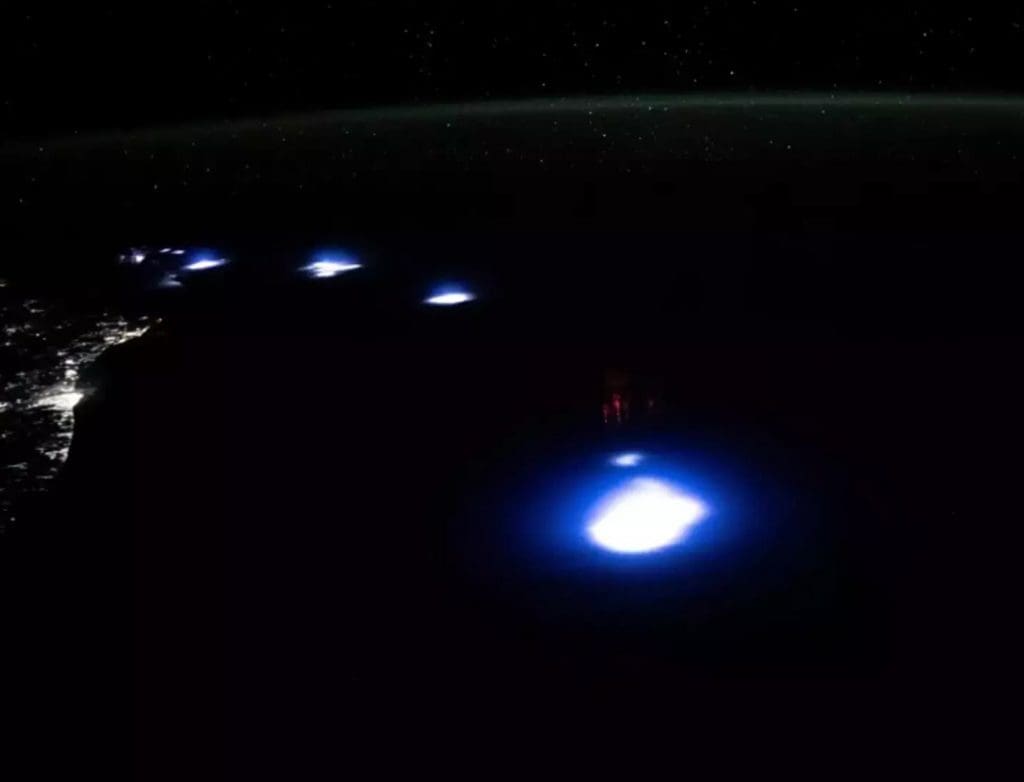NASA astronauts recently spotted eerie red lights glowing in Earth’s atmosphere, capturing a stunning image that has intrigued scientists and the public alike. The photo, taken by Matthew Dominick, commander of the SpaceX Crew-8 mission, shows the mysterious lights, known as “red sprites,” hovering above the coast of South Africa. These phenomena typically form above thunderclouds in the mesosphere, about 53 miles above the Earth’s surface, and stand vertically like an otherworldly spacecraft.
Red sprites are a type of Transient Luminous Event (TLE), colorful bursts of energy that appear above storms due to lightning activity below. Despite their striking appearance, NASA confirmed that these lights are not of alien origin. Dominick’s image is part of NASA’s effort to encourage public participation in documenting these rare events through their ‘Spritacular’ citizen science project. This initiative aims to build a comprehensive database of sprites and other TLEs, leveraging contributions from amateur photographers and sky watchers.

Dominick shared the image on social media, expressing his excitement and seeking tips on capturing more sprites. He noted the importance of photographing strong lightning storms to increase the chances of spotting these elusive phenomena. NASA’s press release emphasized the value of citizen-contributed photos for scientific research, urging the public to submit their captures to aid in the study of TLEs.
The International Space Station (ISS) plays a crucial role in observing these events, often using the Atmosphere-Space Interactions Monitor (ASIM) to collect valuable data. These observations help scientists better understand the interactions between the Earth’s atmosphere and space weather. The recent image of red sprites adds to a growing body of evidence, showcasing the unique and dynamic processes occurring in our planet’s upper atmosphere.
This discovery highlights the importance of continued exploration and observation from both space and Earth. As technology advances and public engagement increases, our understanding of these fascinating natural phenomena will continue to deepen, shedding light on the complex dynamics of our planet’s atmospheric and electrical systems.




